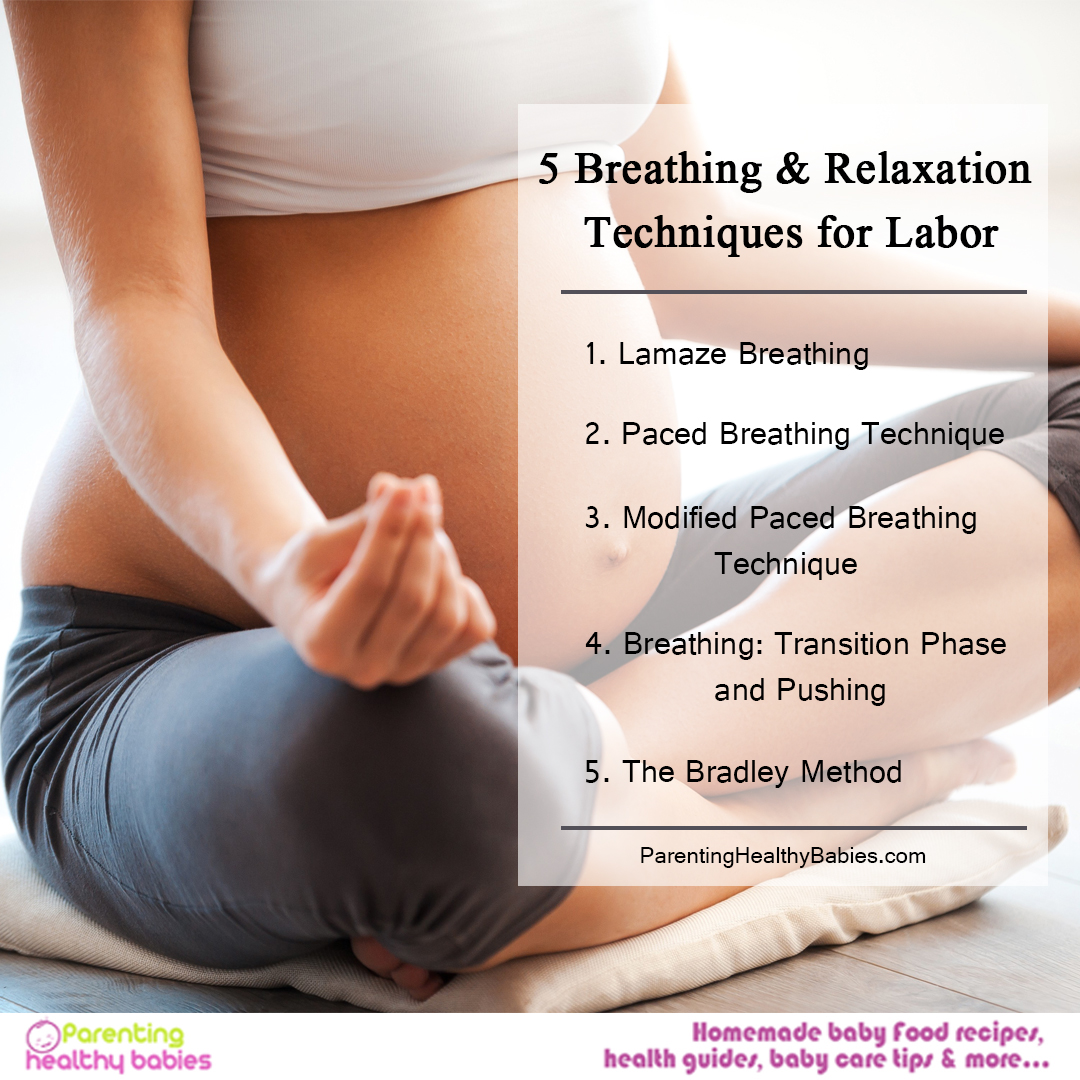It is a known fact that labor can be extremely painful. Even in the age of epidurals, some mothers may choose to deliver their baby, without subtracting the pain. Deep, relaxed breathing has benefits like getting more oxygen, reducing your blood pressure, etc. It can also make you feel more in control of the labor. Here, we will discuss the best breathing techniques for labor, and how they might make you feel better during the process.
In this article:
Does Breathing Really Help Labor?
5 Breathing Techniques for Birth
Does Breathing Really Help Labor?
It does! Patterned breathing is when you decide on a pattern that suits you, and the stage of labor you are in. Taking too many deep breaths one after another is not ideal nor patterned. It leads to panic breathing and hyperventilation, ending up with you even more stressed than you were before.
Patterned breathing has great benefits. Some of which are :
- Your concentration is diverted into maintaining the pattern, distracting you a little from the pain.
- The rhythm of breathing provides you with some calm.
- The increased oxygen is healthy for both you and your baby.
- It makes you feel more in control and becomes a response to your pain.
Breathing and relaxation techniques for birth are widely popular. There are classes that train you and your partner to prepare for labor using breathing techniques for labor. Preparation makes you feel better about the whole ordeal. You can be both mentally and physically prepared for the task in front of you.
5 Breathing and Relaxation Techniques for Labor
Let’s talk about breathing techniques for labor. Most physicians advise you to make your own breathing pattern according to your needs. Your body knows how to prepare for labor. But, most women take the time to learn about breathing patterns just in case the body instincts do not kick in during labor. We will tell you about a few breathing patterns for labor, and you can pick the best which suits your needs.
Lamaze Breathing
It is the most popular method and one cannot even begin talking about the best breathing patterns for labor without including it first. Some pointers in it are :
- Breathing through both your nose and mouth.
- Rhythmic deep breathing.
- Focusing on one physical item such as a memento or your partner.
Those who advocate for the Lamaze technique, say that breathing is not the only thing to be learned from it. It also involves position, movement and massage.
Steps to follow :
- Take a deep breath when a contraction begins and when it ends.
- When you release your breath, release the tension starting from your toes and then the rest of the body. It is also called as the organizing breath.
- Whenever you exhale, relax different body parts one by one.
- During active labor, inhale through your nose and exhale through your mouth.
- Keep the breathing slow at first, and increase later according to the intensity of the contractions.
- Switch to deeper breaths when your contraction increases and lighter ones when the intensity decreases.
- If you prefer you can use verbal syllables “hee” for a shorter breath and “hoo” for a longer one.
- Breathe according to your comfort, when you need to push you can take a deep breath and exhale as you bear down.
- After each contraction is over, take a couple of relaxing breaths.
Paced Breathing Technique
When the contractions of labor intensify, use the paced breathing technique. Practice it regularly in the last trimester.
Steps to follow :
- Fill your lungs with a deep breath and exhale.
- When your contraction begins take 7-10 deep breaths in a minute. Using your hands stroke the lower abdomen upwards and when you exhale let your hands move downwards. The slight massaging of uterus helps with the contractions.
- When the contraction is gone, breathe normally.
Modified Paced Breathing Technique
After the cervix is dilated for more than 5 cm, the contractions intensify and paced breathing techniques may not be enough to get you through it. Use the modified paced breathing technique for further contractions. It is one of the good breathing and relaxation techniques for labor. You may practice this in the last month, regularly.
Steps to follow :
- Take a deep relaxing breath.
- When a contraction begins, start with light breaths and increase the frequency as the contraction peaks. It usually peaks at around 30 seconds, then you can breathe slower after it.
- You can continue massaging your uterus, but if the sensation becomes unbearable to you, ask your partner to massage your back.
- After the contraction is done, breathe normally.
Breathing: Transition Phase and Pushing.
This type of controlled breathing technique is used to stop you from pushing when the cervix isn’t dilated, thereby conserving your energy. If you push too soon due to the pressure in the rectum, you might end up with tearing in the cervix.
Steps to follow :
- When the contraction begins, pant many times. Forming an “O” with your mouth, blow out as if you are trying to extinguish a candle flame.
- Repeat this so that you do not bear down until the cervix is fully dilated.
- Usually, it is 6-7 pants and 1 blow for each contraction.
The Bradley Method
It was given by Dr. Robert Bradley which says that a woman can have a natural childbirth without medications, with the support of her partner. He believed a woman should play a more active role in labor and not be knocked out unless absolutely necessary. He said that active, controlled breathing is all that’s required as a technique. Calm, sleep-breathing could also work. In this method, the baby is put on the breast immediately after delivery, as the mother is the ideal “warmer” and not a machine.
Some tips to follow.
A few tips are given here to make the process of birth as relaxing as possible for you and your baby. They are :
- Try to practice breathing techniques for labor as regularly as possible.
- Along with breathing techniques, work on the relaxation part as labor is a very exhausting process.
- Try to watch some breathing techniques and labor delivery videos, breathing techniques for labor on YouTube.
This article gives you a brief idea about breathing techniques for labor. You can join a class to know the birthing process better, along with your partner to prepare yourself practically too.
References
https://www.ncbi.nlm.nih.gov/pubmed/29103415
https://www.ncbi.nlm.nih.gov/pmc/articles/PMC3209750/












